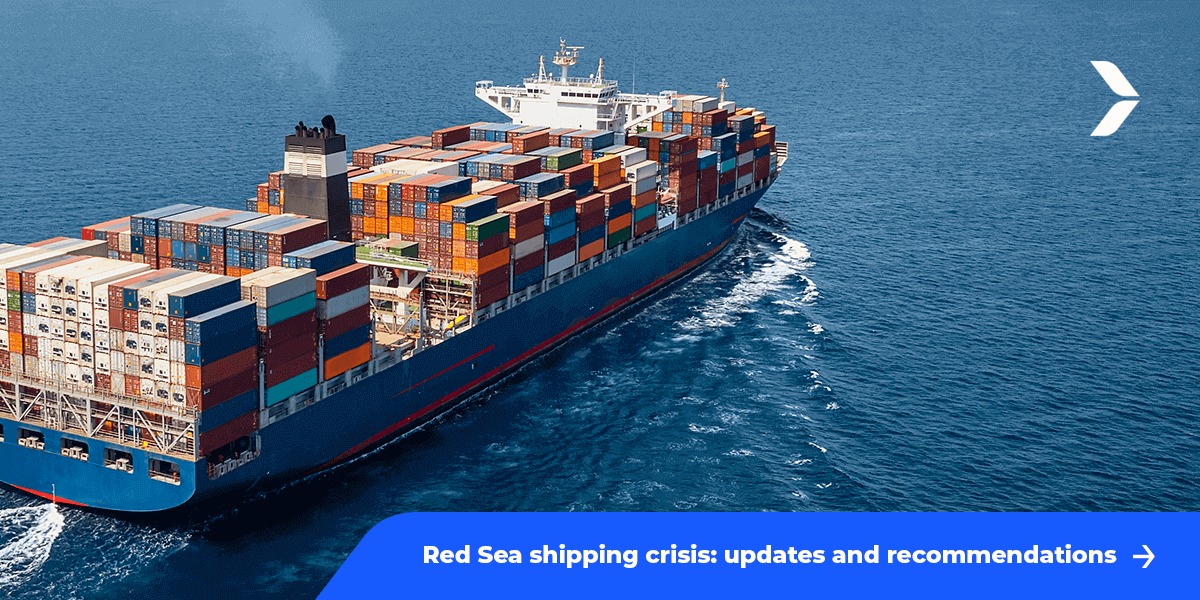Overview
The recent attacks in the Red Sea have created waves across the global shipping industry, with implications for international trade, the economy and consumers worldwide. Here’s an overview of the situation and potential impacts on global shipping in the first half of 2024.
What is the Red Sea shipping crisis?
The Red Sea shipping crisis is a disruption to global trade caused by attacks on cargo ships by Houthi rebels in Yemen. This has made the Suez Canal, a crucial passage for 30% of the world’s container traffic, too risky for many shippers.
Cause
- Houthi rebel attacks on cargo ships in the Red Sea
Impact
- Ships rerouted around Africa, adding distance and time to journeys
- Increased shipping costs
- Disrupted supply chains
- Potential for higher prices of imported goods
The Current Situation
Yemen’s Houthi rebels have recently attacked ships traveling through the Red Sea, significantly disrupting maritime trade and traffic through the Suez Canal. This has prompted major shipping companies to reroute vessels on much longer journeys around the southern tip of Africa.
For example, Maersk, one of the world’s largest shipping companies, had planned to resume Red Sea routes under the protection of a U.S.-led naval coalition. However, after another set of attacks, Maersk indefinitely halted Red Sea operations and is sending ships around the Cape of Good Hope until further notice.
In addition, top carriers like Ocean Network Express (ONE), Orient Overseas Container Line (OOCL), Wallenius Wilhelmsen, and Yang Ming have paused Red Sea journeys or decided to reroute ships. Circumnavigating Africa adds 1-2 weeks to voyage times.
Ripple Effects on Trade and Economics
These shipping disruptions have had global economic repercussions. Goldman Sachs estimates that around 30% of worldwide container trade has been impacted, with 70-80% of vessels rerouted as of December 2023.
Consequences include surging freight rates, delays in ships returning to Asia for reloading ahead of Chinese New Year, and climbing oil prices due to fears of energy supply chain issues. Though not as extreme as pandemic supply chain woes, the problems are still pronounced.
U.S. West Coast shipping prices have also jumped partly due to the crisis limiting Panama Canal traffic. The shorter Asia-to-West Coast trip now looks more cost-effective for cargo.
How does the Red Sea crisis affect ocean freight?
The Red Sea shipping crisis has significantly impacted ocean freight in several ways:
- Route Diversions: To avoid security threats in the Red Sea, many shipping companies are opting for the longer route around the Cape of Good Hope. This adds significant distance (up to 53%) to journeys, increasing travel time and fuel consumption.
- Soaring Costs: The increased distance translates to higher operational costs for shipping lines. This translates to surging freight rates, impacting businesses that rely on ocean transportation.
- Supply Chain Disruptions: The crisis has disrupted established shipping schedules and caused delays. This throws a wrench into global supply chains, leading to potential product shortages and impacting industries reliant on just-in-time inventory models.
- Potential Price Increases: With rising freight costs, businesses may have to raise product prices to offset expenses. This could lead to inflation in imported goods for consumers.
Key takeaways
- With 30% of global container trade transiting through the Suez Canal, the Red Sea shipping crisis is upending supply chains.
- It is also increasing shipping costs, causing the prices of some routes — particularly from Asia to Europe — to surge nearly five-fold.
- Higher shipping costs are likely to pass through to imported goods prices with a lag, depending on both the duration and intensity of the crisis.
- Overall, J.P. Morgan Research estimates the disruptions could add 0.7 percentage points to global core goods inflation, and 0.3 percentage points to overall core inflation, during the first half of 2024.
Navigating the Red Sea Crisis with Agility
The Red Sea crisis presents a complex challenge for ocean freight forwarders. However, by staying informed, adapting strategies, and leveraging the right resources, you can navigate these turbulent waters and ensure business continuity for your clients. Remember:
- Prioritize communication: Keep your clients updated on the situation's impact on shipping routes, costs, and timelines.
- Explore alternative routes: Investigate alternative routes, including their feasibility and cost implications, to offer clients informed choices.
- Embrace technology: Utilize data analytics and real-time tracking tools to optimize routes and maintain transparency.
- Build resilience: Develop contingency plans for future disruptions to mitigate risks and ensure efficient crisis management.
The Red Sea crisis is a stark reminder of the dynamic nature of the shipping industry. By adopting an agile and resourceful approach, ocean freight forwarders can not only weather this storm but also emerge stronger by providing invaluable support to their clients during challenging times.
Navigating the Red Sea Shipping Crisis with US Enterprises
The Red Sea shipping crisis has created significant challenges for ocean freight forwarders, disrupting supply chains, increasing costs, and causing delays. However, in these turbulent times, having a reliable partner to help navigate these complexities is crucial.
At US Enterprises, we offer expert customs brokerage and logistics solutions to ensure your cargo moves smoothly despite the disruptions. Our extensive experience in global logistics, coupled with our in-depth knowledge of customs regulations, enables us to provide comprehensive support to our clients.
Navigating the Red Sea shipping crisis requires agility, expertise, and strategic planning. US Enterprises stands ready to support you through these challenges, ensuring your business remains resilient and your goods reach their destinations efficiently. Trust us to be your reliable partner in these uncertain times.


